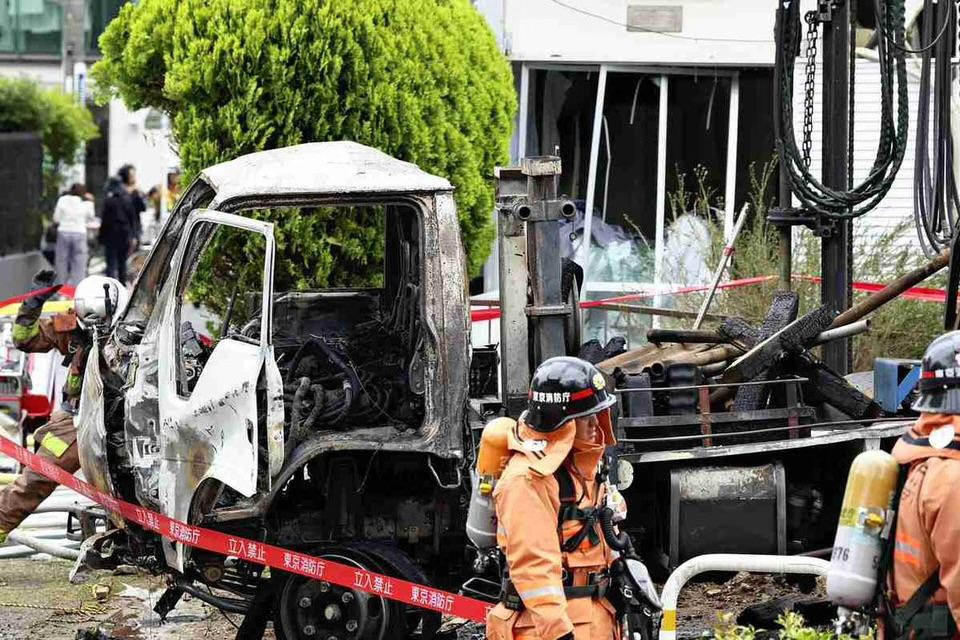A powerful explosion rocked the normally quiet Higashikasai neighborhood of Edogawa Ward, Tokyo, on Tuesday morning, leaving ten people with minor injuries and nearly 40 buildings damaged. Authorities suspect that a buried gas cylinder may have triggered the blast at a condominium construction site.
The incident occurred around 11:30 a.m. at a busy residential and commercial intersection near Kasai Station on Tokyo Metro’s Tozai Line. According to the Tokyo Fire Department, the explosion set off a blaze that engulfed a truck and took over four hours to extinguish. More than 30 fire engines were dispatched to the site.
The explosion was so strong that it shattered windows and walls of nearby structures, including a convenience store, several homes, and local businesses. Initial reports state that 38 buildings within a 100-meter radius were affected.
Emergency services rushed to the scene as smoke billowed above the skyline. Among the ten people injured were construction workers and nearby residents, ranging in age from their 20s to 70s. Though no one was seriously hurt, many complained of ear and throat pain caused by the pressure and fumes.
Firefighters and investigators said the explosion occurred while construction crews were pile-driving — a process that involves inserting heavy supports into the ground for the foundation of a new condominium. During this activity, workers inadvertently struck a buried gas cylinder. Investigators later identified the cylinder as containing acetylene, a highly flammable gas commonly used in metal welding.
The damaged cylinder is believed to have leaked gas into the surrounding soil, which likely ignited upon contact with heat or friction during the construction work. Authorities are now probing how such a hazardous item came to be buried beneath a residential plot — and how long it had been there.
“This is a serious lapse in safety protocol,” a Tokyo Metropolitan Police spokesperson said. “We’re investigating whether this was due to past construction oversight or illegal dumping.”
The incident has left the community shaken. Many residents expressed concerns about the safety of their neighborhood, especially given the density of condominiums and businesses in the area.
The site of the blast remains cordoned off as forensic teams examine debris. Police are also reviewing past land use records to determine if the cylinder was left behind from previous industrial activity.
Tokyo officials have urged other construction sites to conduct thorough underground safety checks, particularly in urban zones with a history of industrial use.
FAQs
Q1: Why was a gas cylinder buried underground in a residential area?
The acetylene cylinder is believed to have been left from a previous construction or industrial project, possibly due to improper disposal or negligence. Investigators are currently examining land records and interviewing witnesses to determine whether this was accidental or a violation of safety regulations.
Q2: What safety measures are being taken after the explosion?
In response to the incident, Tokyo’s construction safety authority is initiating a city-wide review of underground hazards at building sites. Developers are being instructed to use ground-penetrating radar or other detection technologies before excavation. Meanwhile, Edogawa Ward officials are conducting community outreach to reassure residents and assist those affected by the explosion.
The Edogawa explosion serves as a stark reminder of the hidden dangers beneath urban landscapes and underscores the importance of strict adherence to safety protocols in construction zones.
Source: https://www3.nhk.or.jp/nhkworld/en/news/20250527_11/
















